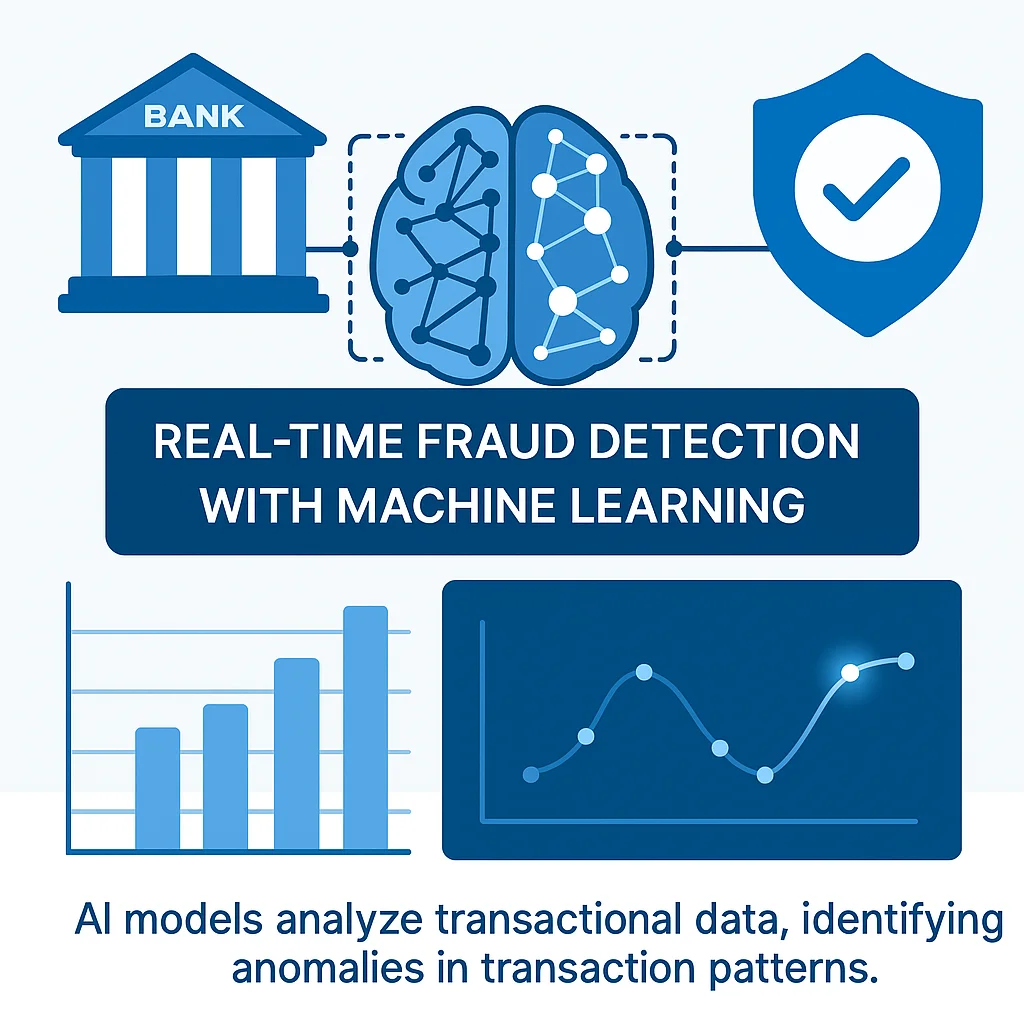
Fraud moves fast. Rules alone can’t keep up. That’s why banks are turning to deep learning — models that learn the rhythm of legitimate behavior and flag the smallest off-beat note. Building on my published work on real-time credit card fraud detection, this post breaks down how these models actually spot anomalies in transactions and help prevent losses without frustrating good customers.
Why rules struggle — and where AI shines
Traditional systems rely on hand-crafted rules (e.g., “block >$1,000 abroad at 3 a.m.”). They’re easy to explain, but fragile: fraudsters adapt, and rules explode in number, creating conflicts and false alarms. Deep learning, by contrast, learns patterns directly from data — subtle combinations of amount, merchant category, device, geolocation, velocity, and the sequence of events — so it can generalize to new fraud styles without hundreds of brittle rules.
How models actually spot anomalies
- Sequence models (LSTM/GRU/Temporal CNN/Transformers)
Fraud isn’t just what happened; it’s when and in what order. Sequence models learn each cardholder’s natural spending timeline — weekend groceries, morning transit, monthly utilities — and highlight deviations (e.g., a rapid burst of micro-transactions at unfamiliar merchants after a cross-border purchase). These models produce a probability that the next transaction “fits” the learned pattern and flag low-fit events in real time. - Representation learning & autoencoders
Deep nets build dense vector embeddings for cards, merchants, devices, and locations — capturing similarity (two merchants that behave alike, two cities the customer often visits). An autoencoder learns to reconstruct “normal” transactions; high reconstruction error = abnormal behavior. This is powerful for catching novel fraud types where labels are scarce. - Graph neural networks (GNNs)
Fraudsters reuse devices, IPs, or mule accounts across many cards. Representing the ecosystem as a graph (nodes: cards, merchants, devices; edges: transactions, logins) lets a GNN propagate suspicion across connected entities. If a device touches multiple disputed cards, transactions via that device get a higher risk score — often before chargebacks pile up. - Hybrid supervision for rare events
Because confirmed fraud is rare, we blend supervised training (on labeled fraud/non-fraud) with unsupervised anomaly signals (autoencoder error, sequence likelihood) and cost-sensitive losses (focal loss, class-balanced loss). We evaluate with precision-recall (AUCPR), not just accuracy — because missing 1 in 100 frauds (false negatives) and mistaking 5 in 100 good users (false positives) have very different costs.
What “real-time” actually looks like
A practical streaming pipeline has four layers:
- Ingestion: Transactions flow through Kafka/Kinesis with device and session metadata; a low-latency feature store provides fresh aggregates (spend in last 5m/1h/24h, merchant diversity, velocity metrics).
- Model serving: A lightweight feature encoder and primary model (e.g., a Temporal CNN or small Transformer) run on GPU/CPU with p95 latency under ~50 ms.
- Decision orchestration: Scores route to policies — approve, step-up (3-D Secure/OTP/biometric), or decline. Step-ups add friction only when necessary, reducing false declines.
- Analyst loop: High-risk cases feed a queue with reason codes and transaction context so investigators can act quickly and provide feedback for continuous learning.
Cutting false positives (without letting fraud through)
- Two-stage scoring: A fast model screens everything; a heavier model re-scores only borderline cases.
- Segmented thresholds: Different thresholds by customer segment, merchant risk band, and channel (card-present vs. e-commerce).
- Counterfactual explanations: Explainability (e.g., SHAP) shows which features drove the alert — “unseen device + rapid velocity + new merchant cluster” — helping analysts override or confirm decisions confidently.
- Adaptive learning: Monitor concept drift (distribution shifts during holidays, new merchant categories, or fraud rings) and trigger retraining when drift exceeds a control limit.
Explainability, compliance, and trust
Banking AI must be auditable. We pair each score with:
- Reason codes aligned to policies (e.g., device reputation, geovelocity, merchant anomaly).
- Fairness checks to ensure thresholds and features don’t create disparate impact.
- Model risk management artifacts: validation reports, backtests, challenger models, and change logs — so compliance teams can trace every release.
Results in practice
In my research on deep learning for credit-card fraud detection, the real-time approach focuses on reducing both losses and customer friction by learning personalized patterns and catching coordinated abuse across entities. This work emphasizes building compact, latency-friendly models that slot into existing authorization flows — which is essential for production banking environments.
What we’re building at DataNext Analytics
At DataNext Analytics, we’re productizing these ideas as modular components banks and fintechs can adopt quickly:
- Streaming anomaly scoring API with sequence + autoencoder ensembles.
- Entity resolution & graph risk for shared devices/merchants across portfolios.
- Analyst console with real-time case triage, reason codes, and continuous feedback.
- Operational safeguards: canary deploys, shadow mode, drift sensors, and human-in-the-loop review.
The goal is simple: maximize fraud catch, minimize customer pain, and give risk teams transparent tools that evolve as fraud evolves.
